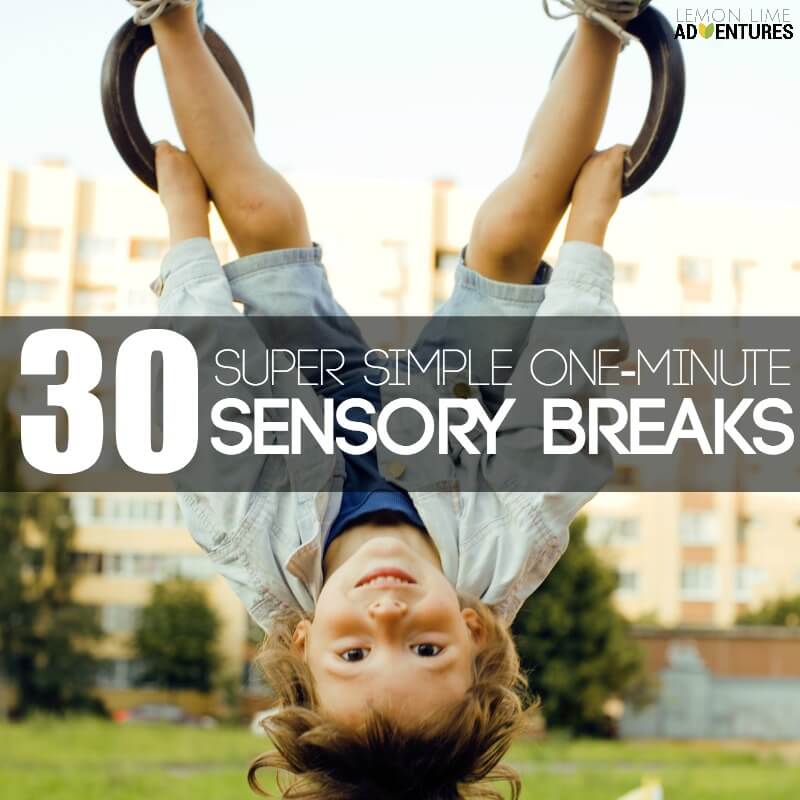As my son and I played outside the other day it got windy, cooler and the sky grew dark very quickly. All I was thinking about was getting everything put away and getting inside before we got drenched. It wasn’t going to be a sprinkle. We made it inside seconds before it began to pour. As soon as we were in the door my thoughts were no longer with the rain. I immediately started checking off my mental to-do list and went to empty the dishwasher. My three year old went to the screen door to watch the rain. He was completely in the moment. It was such a great reminder of the many sensory activities that teach mindfulness.

* This post may contain affiliate links for your convenience. Click here for my full disclosure.
Mindfulness comes naturally to babies and very little children. They smell the flowers and watch the ladybugs. As we get older and have more to think about staying in the moment becomes more difficult.
Mindfulness is really about awareness. It’s about being aware of our thoughts, our surroundings, our emotions and how we feel physically. It’s a powerful mental skill that can help us get through a stressful situation or let go of daily anxiety. It’s a bit of an abstract concept but an important one. And there are many ways to teach mindfulness through play, especially sensory activities.
Sensory play can be anything that involves the sense of sight, smell, sound, taste, touch and even internal emotions and physical movement. With a little conversational prompting any sensory activity can teach mindfulness.
Super Simple Sensory Activities That Teach Mindfulness
Here are some examples of what that might look like during activities involving some of the different senses.
Visual and Auditory Sensory Activities
These senses will naturally be engaged while taking a walk outside. As you walk ask your child what they see and hear. Bring attention to the chirping birds, the colors of flowers or the sound of the wind. Even noticing the way your feet feel on the pavement brings attention inward and away from distracting thoughts of other situations.
Calm down jars and calming music are extremely effective ways of using sight and sound to teach mindfulness during stressful situations.
Some children might even react to the calming nature or adult coloring books, mazes
or even i-spy games. By focusing their attention on something so particular and minute, they are able to calm their body to a slow steady speed, able to handle the stress of their day.
Tactile Sensory Activities
Sense of touch is most often associated with sensory play. It is valuable to allow children to explore through senses without interruption but asking a few questions will add an aspect of mindfulness.
“How do you think this will feel?”
“Is it squishy, cold, warm, bumpy?”
“Do you enjoy the way that feels on your hands?”
Simple sensory activities for the tactile sense could include using hand fidgets, putty or even squish balls.
My child loves to feel this calming slime slip through his fingers when he is upset and needing a break.
Taste and Smell Sensory Activities
Many sensory activities are taste-safe and involve the tactile, oral and olfactory senses. Asking about the way sensory materials or foods taste and smell will bring awareness to what is going on in the moment. Use descriptive words like sweet, salty, bitter or sour. Notice the way something smells, looks and feels before tasting it.
Emotional Regulation Sensory Activities
Mindfulness through the sense of interoception can be extremely important in terms of emotional regulation. Being aware of which situations create different emotions, how to identify them and what they feel like in the body can be effective skills for calming a tantrum. It can be helpful to have a calm down corner equipped with some fidgets and other calming tools as a safe place to work through difficult emotions.
Movement Sensory Activities
Movement of the body and awareness of its relationship to surroundings through proprioceptive and vestibular senses can also be exercises in mindfulness.
Activities that involve heavy work and the use of brain breaks to avoid overload will lend themselves to bringing consciousness back to the present moment and a mindful attitude.

Is mindfulness something that is important to you? Does it come easily or do you have to work at it? Why do you think it’s a valuable skill to teach children? Let’s start a conversation about it in the comments below!
 Amy is a former teacher turned stay-at-home mom and writer. She loves sharing what she knows about family, play and early learning. Away from the computer you can find her spending family time, organizing or decorating her home, reading a good self-help and occasionally pretending she knows how to cook but she usually leaves that to her awesome husband! You can find out more about her at Firefly Writing.
Amy is a former teacher turned stay-at-home mom and writer. She loves sharing what she knows about family, play and early learning. Away from the computer you can find her spending family time, organizing or decorating her home, reading a good self-help and occasionally pretending she knows how to cook but she usually leaves that to her awesome husband! You can find out more about her at Firefly Writing.
For More Adventures in Learning







Pingback: Two Simple Steps to Help Kids Recognize Emotions
Pingback: 7 Simple Mindfulness Exercises to Calm an Angry Child
Pingback: Super Fun Activities to Help Kids Recognize Big Emotions